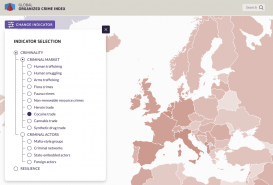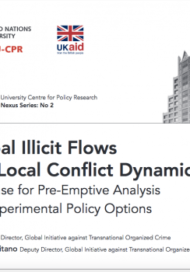Posted on 06 Jan 2014
2013 was, in many ways, the year that the world woke up to the extent to which the internet has really changed the game completely for organized crime. While we have long waxed lyrical about the potential for ICT to improve development and solve global ills, criminal groups saw the same potential and acted upon it to further enable existing criminal markets – in everything from drug deals, to sex trafficking, money laundering and identity theft – and at the same time created a myriad of new crimes. Cybercrime has put organized crime on steroids: the internet has made everything possible, while encryption and virtual currencies allow transactions to go undetected, almost anonymous. An entire service industry has grown up to facilitate the cybercriminal, to the point that internet theft and fraud are available to almost anyone with access to a computer. Neither your money, identify, information or even your children are safe, as long as they are connected.
Cybercrime has pushed law enforcement to new lengths to redefine the way they understand and respond to crime, now that one fundamental principle of policing has changed: there is no longer a physical link between criminal and crime.
Big takedowns, like the Silk Road bust which closed down an illicit marketplace worth an estimated $80 billion dollars, highlighted the extent of challenge, but also gave us hope that we were capable of fighting the crime. But just like the mythical hydra, cutting off one head only resulted in two more growing in its place in less than a month. Some innovations have been tried outside of law enforcement, including this sting operation by an NGO that created a virtual girl to ensnare pedophile sex predators. But vigilante justice cannot be a sustainable response, and ways have to be found that civil society can work in harmony with security institutions to combat a common challenge.
The private sector have a pivotal role to play in both shaping the debate and leading the response, as it is often left to them to bear the financial costs of cybercrime attrition. Credit card companies pay the penalties of identity theft – the state offers little in the way of enforcement or restitution. The greatest vulnerabilities exist in the emerging BRICS economies, where awareness and investment are low, but connectivity is growing exponentially. Cyber-security companies are blazing the trail in trying to protect individual and corporate victims, whereas in times of austerity, the multilateral institutions struggle to find the mandate, expertise, and resources to move forward the agendas.
There is unquestionably an uphill battle to fight. Hopefully, 2014 will be a year in which the international community comes together, both at policy and operational levels, to raise the bar in terms of awareness raising, information gathering and sharing, innovation and cooperation amongst a wide range of actors. This is an issue which must stay high on the agenda of all efforts to respond to organized crime.



